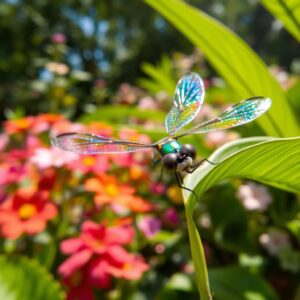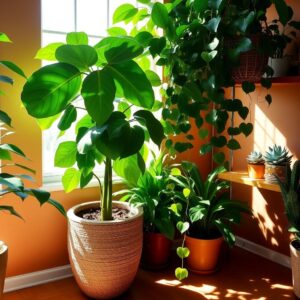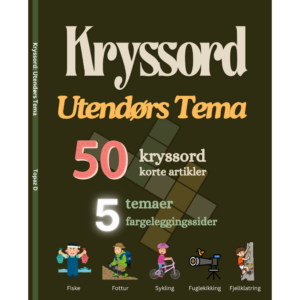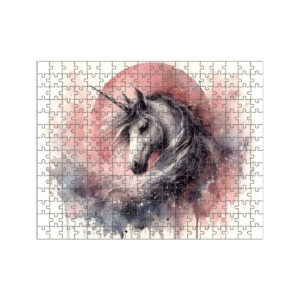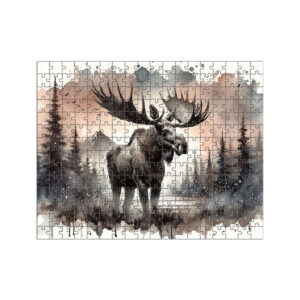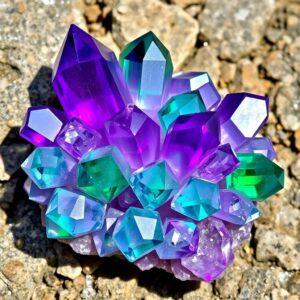
Explore & Play
Discover interesting topics and solve the accompanying crossword puzzle.
Dye Crossword | World of dyes and explore creative possibilities
Table of Contents
Dye Crossword
You can either fill in the crossword puzzle directly on this page or click the button in the bottom right corner to print it for free.

The Art of Fabric Dyeing: Techniques and Tips for Beginners
I. Introduction
Fabric dyeing is an ancient art that has evolved through centuries, blending creativity with science to bring color to our textiles. From the rich hues of natural dyes to the vibrant shades of synthetic pigments, dyeing offers endless possibilities for personal expression and artistic creativity. Understanding the various techniques and materials involved not only enriches your craft but also connects you to the cultural heritage of dyeing practices around the world. To enhance your learning experience, we’ve included a crossword puzzle featuring essential dye-related terms that will challenge your knowledge and expand your vocabulary.
II. The History of Fabric Dyeing
Understanding the history of fabric dyeing allows us to appreciate the rich cultural significance of colors and materials. Ancient civilizations relied heavily on natural dyes derived from plants, insects, and minerals to color their textiles. For example, the vibrant blue indigo was cultivated and processed in regions like Africa and India, while the deep red cochineal dye was sourced from insects native to Central and South America. These dyes were not only used for practical purposes but also held symbolic meanings, often representing status, identity, or spirituality.
As time progressed, the evolution of dyeing methods introduced synthetic alternatives that revolutionized the textile industry. The invention of synthetic dyes in the mid-19th century provided a broader color palette and improved colorfastness, making dyeing more accessible and cost-effective. However, this shift also raised concerns about environmental impact, leading to a renewed interest in sustainable dyeing practices. Understanding this historical context enriches our appreciation for the materials we use today.
III. Understanding Dyes and Pigments
Dyes and pigments are fundamental components in the world of color, but they serve different purposes and have distinct properties.
A. Definition of Dyes
Dyes are soluble substances that can chemically bond with the fibers of fabrics. When applied, they penetrate the material, leading to vibrant colors that become an integral part of the fabric. Dyes are often used in various applications, from textile dyeing to food coloring. There are several categories of dyes, including:
Natural Dyes: Derived from plants, minerals, or animals, natural dyes have been used for centuries. Common sources include indigo from plants, cochineal from insects, and madder root for reds. Natural dyes are often favored for their eco-friendliness and subtle, complex colors.
Synthetic Dyes: Developed in laboratories, synthetic dyes offer a wider range of colors and greater colorfastness compared to natural dyes. They are commonly used in commercial dyeing processes due to their affordability and consistency. Popular examples include reactive dyes, acid dyes, and direct dyes.
B. Definition of Pigments
Pigments are insoluble colorants that do not bond with the fabric fibers. Instead, they sit on the surface, creating a layer of color. While pigments can offer excellent opacity and lightfastness, they may require a binding agent (like a medium) to adhere to fabrics effectively.
- Differences Between Dyes and Pigments:
- Solubility: Dyes are soluble, while pigments are not.
- Bonding: Dyes chemically bond to fibers, while pigments adhere to the surface.
- Colorfastness: Dyes typically provide vibrant colors that can fade over time, while pigments often offer better durability.
Understanding the characteristics of dyes and pigments is crucial for choosing the right one for your dyeing projects. The choice between dyes and pigments will significantly impact the final outcome, including color intensity, fabric feel, and longevity.
IV. Essential Dyeing Techniques
Dyeing fabric can seem daunting at first, but with a few essential techniques, you can achieve beautiful results. Here are some common methods that cater to various skill levels and desired effects.
A. Immersion Dyeing
This is one of the most common and straightforward dyeing methods. Immersion dyeing involves submerging the fabric in a dye bath. Here’s how to do it:
Prepare the Dye Bath: Dissolve your chosen dye in hot water according to the manufacturer’s instructions. For natural dyes, you may need to simmer the plant material first.
Wet the Fabric: Wet the fabric thoroughly to ensure even dye absorption. This prevents uneven coloring.
Dye the Fabric: Submerge the fabric in the dye bath, stirring gently to ensure uniform color. The length of time the fabric remains in the bath will determine the depth of color.
Rinse and Set the Color: After achieving the desired shade, rinse the fabric in cold water until the water runs clear. This helps remove excess dye and set the color.
B. Tie-Dyeing
Tie-dyeing is a fun and creative technique that allows for unique patterns and designs. By tying or folding the fabric in specific ways, you can create a variety of effects.
Prepare the Fabric: Start with a clean, wet fabric.
Fold and Tie: Fold the fabric in your desired pattern (e.g., accordion fold or spiral) and secure it with rubber bands or string.
Apply the Dye: Use squeeze bottles or spray bottles to apply the dye. The tied areas will resist dye, creating a unique pattern.
Set the Dye: Wrap the fabric in plastic wrap and let it sit for several hours or overnight to set the dye before rinsing.
C. Batik
Batik is a traditional dyeing technique that involves applying wax to fabric to create intricate designs.
Prepare the Fabric: Start with a clean, pre-washed fabric.
Apply Wax: Using a brush or a tjanting tool, apply hot wax to areas you want to remain uncolored.
Dye the Fabric: Submerge the waxed fabric in the dye bath. The wax will resist the dye, preserving the original fabric color beneath.
Remove the Wax: Once the dyeing process is complete, remove the wax by placing the fabric between layers of newspaper and ironing it. This reveals the beautiful pattern.
V. Getting Started with Dyeing
Embarking on your dyeing journey can be exciting, but it’s essential to prepare adequately to ensure success.
A. Gather Your Materials
Before you start dyeing, collect all necessary materials. Here’s a basic checklist:
Fabric: Choose the right type of fabric for dyeing. Natural fibers like cotton, silk, and wool take dye more effectively than synthetic fibers.
Dye: Select the dye type that suits your project, whether it’s natural or synthetic.
Equipment: Gather pots for dyeing, stirring utensils, gloves, measuring cups, and plastic wrap.
Workspace: Set up a well-ventilated workspace with protective coverings for surfaces, as dye can stain.
B. Safety Precautions
Safety is paramount when working with dyes. Here are some tips to keep in mind:
Wear Protective Gear: Always wear gloves and an apron to protect your skin and clothing from stains.
Work in a Ventilated Area: Ensure proper ventilation to avoid inhaling fumes from the dye.
Dispose of Waste Properly: Follow local regulations for disposing of dye bath water and materials.
C. Practice Patience and Experiment
Dyeing is as much an art as it is a science. Don’t hesitate to experiment with different techniques, colors, and patterns. Keep a journal of your dyeing projects to note what works well and what doesn’t. Remember, mistakes can lead to beautiful surprises, so embrace the learning process.
VI. Natural Dyes: A Sustainable Approach
Natural dyes have been used for centuries, deriving their colors from plants, minerals, and insects. In recent years, the demand for sustainable and eco-friendly practices has led to a resurgence of interest in natural dyeing methods.
A. Benefits of Using Natural Dyes
Eco-Friendly: Natural dyes are biodegradable and less harmful to the environment than synthetic dyes, which often contain toxic chemicals. Using plant-based materials reduces chemical waste and pollution.
Unique Color Palettes: Natural dyes often produce subtle, earthy tones that can be difficult to replicate with synthetic options. The variations in shades from batch to batch can lead to unique, one-of-a-kind results, enhancing the charm of your fabric.
Cultural Heritage: Many natural dyeing techniques are steeped in cultural history. By using these methods, you can connect with traditional practices and appreciate the artistry behind them. This can be particularly meaningful in a world increasingly focused on fast fashion and mass production.
Health Benefits: Natural dyes are less likely to cause allergic reactions or skin irritations compared to some synthetic dyes. This is particularly important for garments worn against the skin.
B. Common Natural Dyes and Their Sources
Indigo: Known for its deep blue color, indigo is derived from the leaves of the Indigofera plant. It requires a fermentation process to release the dye.
Madder Root: This plant provides shades of red and orange. The roots are boiled to extract the dye, which can be used to create vibrant hues.
Turmeric: A common kitchen spice, turmeric yields a bright yellow color. It is easy to work with and can be used for both dyeing fabrics and creating natural paint.
Walnut Hulls: The husks of walnuts produce rich brown shades. They are often used for dyeing fibers and are especially popular in eco-friendly projects.
Cochineal: Derived from the cochineal insect, this dye provides bright red tones. While more challenging to source ethically, it offers a stunning range of colors.
C. Preparing and Using Natural Dyes
Natural dyeing involves several steps, including harvesting, preparing, and dyeing:
Harvesting: If you are using plant materials, be mindful of sustainability practices. Only collect what you need and ensure that you do not harm the plants.
Preparing the Dye: Most natural dyes require a mordant to help the color bond with the fabric. Common mordants include alum, iron, and tannin. Be sure to follow specific guidelines for each type of dye.
Dyeing Process: Natural dyeing often involves longer soaking times and more complex preparation steps. Take the time to experiment with different mordants, soaking times, and temperature settings to achieve the best results.
By choosing natural dyes, you embrace a sustainable approach to coloring fabrics that honors the environment and celebrates the beauty of nature.
VII. Color Theory in Dyeing
Understanding color theory is essential for successful dyeing. It involves the study of how colors interact, how they can be mixed, and how they can create harmonious palettes.
A. The Color Wheel
The color wheel is a fundamental tool in color theory, consisting of primary, secondary, and tertiary colors:
Primary Colors: Red, blue, and yellow are the primary colors. These colors cannot be created by mixing other colors together.
Secondary Colors: Created by mixing two primary colors, secondary colors include green (blue + yellow), orange (red + yellow), and purple (red + blue).
Tertiary Colors: Formed by mixing a primary color with a secondary color, tertiary colors expand the palette further. Examples include red-orange and blue-green.
B. Color Harmonies
Color harmonies are combinations of colors that create pleasing visual effects. There are several types:
Complementary Colors: Colors located opposite each other on the color wheel, such as blue and orange, create high contrast and vibrant effects when used together. In dyeing, complementary colors can be used to create striking patterns.
Analogous Colors: These colors sit next to each other on the color wheel, such as blue, blue-green, and green. Using analogous colors in dyeing can create a harmonious and serene look.
Triadic Colors: This scheme uses three colors evenly spaced around the color wheel, such as red, yellow, and blue. It provides a balanced yet vibrant color palette.
C. The Impact of Color in Fabric Dyeing
Emotional Associations: Colors can evoke various emotions. For example, blue is often associated with calmness, while red can signify energy and passion. Understanding these associations can guide your dyeing choices for specific projects.
Cultural Significance: Different cultures have unique associations with colors. Researching the cultural meanings of colors can enrich your dyeing process and add depth to your designs.
Colorfastness: Consider the longevity of the colors you choose. Some dyes fade more quickly than others, so select dyes that will maintain their vibrancy over time based on your project’s purpose.
By grasping the principles of color theory, you can make informed decisions about your dyeing projects, creating visually striking and emotionally resonant fabrics.
VIII. Troubleshooting Common Dyeing Issues
Even experienced dyers encounter challenges in the dyeing process. Here are some common issues and how to address them.
A. Uneven Dyeing
Cause: Uneven dyeing often occurs when the fabric is not fully saturated or when the dye bath is not mixed well.
Solution: Ensure that the fabric is thoroughly wet before placing it in the dye bath. Stir the dye bath continuously while the fabric is submerged to promote even color distribution.
B. Fading Colors
Cause: Colors may fade due to exposure to sunlight, washing, or improper dyeing techniques.
Solution: To enhance colorfastness, consider using a mordant that improves the dye’s bonding with the fabric. Additionally, wash dyed fabrics in cold water and line dry away from direct sunlight.
C. Color Mixing Issues
Cause: Mixing dyes can result in unexpected colors if not carefully measured or combined.
Solution: Always test dye mixtures on a small swatch of fabric before applying them to your main project. Keep a record of your dye ratios for future reference.
D. Stains from Dyeing
Cause: Accidental spills or splashes can lead to dye stains on surfaces or skin.
Solution: Clean spills immediately with water and soap. For stubborn stains, rubbing alcohol or vinegar can be effective. Always wear protective gear to prevent skin staining.
E. Chemical Reactions
Cause: Some fabrics may react unpredictably with certain dyes, leading to unwanted colors or damage.
Solution: Research the compatibility of your fabric with specific dyes before starting. Conduct small tests to ensure the desired result.
IX. Inspiring Examples of Fabric Dyeing
A. Cultural Variations
To ignite your creativity, let’s explore inspiring examples of fabric dyeing from around the globe. Traditional methods, such as Indian tie-dye or Indonesian batik, highlight the diverse cultural expressions found in fabric dyeing. Each technique carries its unique history, showcasing the relationship between color, culture, and identity.
B. Modern Applications
In addition to traditional practices, many contemporary artists are pushing the boundaries of fabric dyeing. By incorporating modern techniques and innovative materials, these artists are redefining what dyeing can mean in today’s world. Their work serves as a reminder that the art of dyeing continues to evolve, inviting new generations to explore its possibilities.
X. Embracing the World of Fabric Dyeing
Fabric dyeing is not just a craft; it’s an expression of creativity, culture, and sustainability. As you embark on your dyeing journey, remember that experimentation is key. Allow yourself to play with different techniques, colors, and materials to discover your unique style.
By engaging with the dyeing community, you’ll find support, inspiration, and a wealth of knowledge. Attend workshops, join online forums, and share your creations with others to deepen your understanding and enjoyment of this vibrant art form.
XI. Crossword Puzzle Section
To further enhance your understanding of fabric dyeing, we’ve created a fun crossword puzzle featuring essential terms from this article. This puzzle will not only challenge your knowledge but also reinforce your vocabulary related to dyes and dyeing techniques.
Now that you’ve explored the colorful world of fabric dyeing, why not test your knowledge with our crossword puzzle? It’s a fun way to solidify your learning while enjoying the art of dyeing
Share to...
I hope you enjoy the content.
Want to receive our daily crossword puzzle or article? Subscribe!
You may also be interested in
Share to…
Want to receive our daily crossword puzzle?
-
Jigsaw Puzzles
Enchanting Unicorn Watercolor Jigsaw Puzzle 250 | 300 | 500 Brikker
kr 348,00 – kr 439,00Price range: kr 348,00 through kr 439,00 Select options This product has multiple variants. The options may be chosen on the product page -
Jigsaw Puzzles
Majestic Moose in Forest Watercolor Jigsaw Puzzle 250 | 300 | 500 Brikker
kr 348,00 – kr 439,00Price range: kr 348,00 through kr 439,00 Select options This product has multiple variants. The options may be chosen on the product page -
Jigsaw Puzzles
Fjord Elegance: Abstract Jigsaw Puzzle 250 | 300 | 500 Pieces
kr 348,00 – kr 439,00Price range: kr 348,00 through kr 439,00 Select options This product has multiple variants. The options may be chosen on the product page
